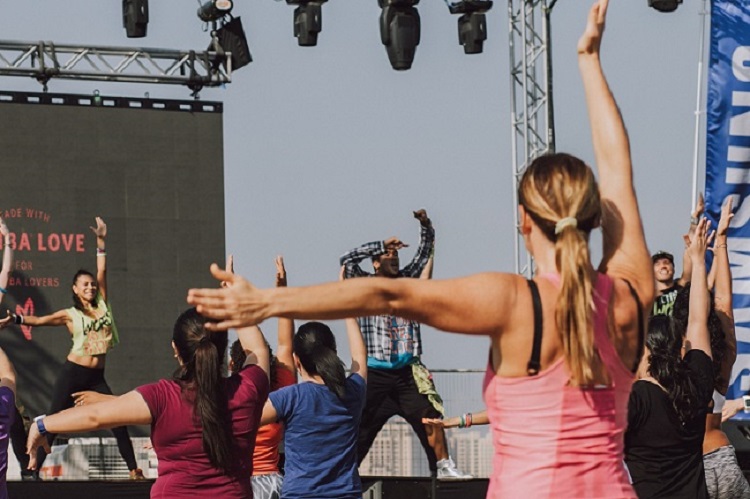Benefits for the back
Yoga is the most effective and affordable method of restoring the spine. Exercises are useful for anyone who suffers from diseases in the area of the back.
The benefits of the practice are enormous:
– posture improves;
– Strengthens the muscle corset that supports the spine;
– the blood supply and metabolic processes in the spinal column get better;
– clamps of nerve endings of the back are eliminated;
– Flexibility and mobility of the spine is developed.
To achieve a therapeutic effect in diseases of the back, you need to practice under the guidance of an experienced instructor and strictly monitor the implementation of all principles of practice.
Benefits for body shape and weight loss
Most asanas in yoga are static exercises, which involve extreme tension of all muscles, including those located in the deep layers. Their stimulation leads to active fat burning. In addition, exercising reduces the level of cortisol, the stress hormone, which provokes the deposition of excess fat around the abdomen.
Practicing dynamic and power yoga in combination with breathing techniques improves the metabolism and speeds up the process of losing weight, helping to consolidate the effect for a long time.
When you are overweight, it is useful to perform twists, bends, stretches, sags and inverted poses. Such asanas strengthen the abs and back muscles, actively burning fat deposits.
The most useful asanas
There are many different postures and their variations (according to some sources 1300). But it is not necessary to master all of them to feel the health benefits. It is enough for beginners to learn how to perform about 10-15 basic asanas correctly.
The most popular and useful are considered to be:
– Tadasana (mountain pose) – improves posture, prevents age-related degeneration of the spinal column, leg joints;
– Adho Mukha Shvanasana (downward facing dog) – improves cerebral circulation, stretches the spine and leg muscles, good for shoulder joints;
– Bhujangasana (cobra pose) – helps improve posture, maintain youthfulness, stimulates digestion, promotes the cycle;
– Virabhadrasana (warrior pose II) – strengthens the muscles of the back, legs, abdomen, promotes weight loss in the waist and hips;
– Shalabhasana (grasshopper pose) – improves digestion, strengthens and stretches the spine, stimulates the prostate gland;
– Balasana (baby pose) – stretches the muscles along the spinal column, relieves tension from the intervertebral discs, helps relieve headaches, fatigue;
– Trikonasana (triangle pose) – tones back nerves, stimulates the intestines, liver, spleen, nervous system, strengthens the muscles on the lateral surface of the trunk, develops flexibility;
– Marjariasana (cat pose) – improves the flexibility of the spine, increases blood circulation, stimulates the excretory system, restores reproductive functions;
– Sarvangasana (candle or birch pose) – has a powerful positive effect on all organs and systems of the body;
– Halasana (plow pose) – regulates blood circulation of the spinal cord, improves digestion, tones the genitals, and relieves fatigue of the spine;
– Shavasana (corpse pose) – relieves muscle tension, relieves mental cramps, stress, benefits heart disease, high blood pressure.
Salamba Sirshasana is considered to be the “king” of all asanas. It is beneficial for all organs and systems of the body, gets rid of chronic diseases, rejuvenates the body. But this asana is not for beginners, it is not suitable for the elderly or overweight people. Before starting to master it, you should gain experience.
Harm and contraindications
Yoga exercises have a significant impact on the human body. Unfortunately, this effect is not always positive for people with illnesses or injuries. Performing some asanas can aggravate the course of the disease and cause harm.
Anyone who decides to practice, should take into account their age, health status, peculiarities of the body structure. There may be restrictions or contraindications for performing some asanas.
Yoga is contraindicated for the following diagnoses:
– Hypertension stage 2 and above;
– High intracranial pressure;
– Infections of the brain or spinal cord;
– Oncological diseases;
– Severe heart or vascular disease;
– blood diseases;
– Infectious diseases of the joints;
– Exacerbation of chronic diseases of the digestive system (cholecystitis, pancreatitis, etc.)
– Severe craniocerebral injuries;
– exacerbations of intervertebral hernia;
– schizophrenia.
Do not practice earlier than six months after surgery, bone fractures, stroke, myocardial infarction.
It is important to consult a physician and yoga instructor before starting a class. Many diseases and health conditions require only an exclusion of certain asanas from daily practice, not being absolute contraindications.
What is the right way to practice?
A man is created in such a way that he needs harmony with the outside world, correspondence to it. If you don’t, you start to feel uncomfortable, unwell and depressed. Asanas help to restore harmony, so it’s very important how you do them. It is important to achieve precise positioning of the body, beauty of movements, therefore it is better to train under the guidance of an experienced teacher and in front of a mirror for beginners.
One of the necessary components of success in yoga practice is satisfaction from doing asanas, the feeling of muscle joy. Without this, the result will be incomplete.
Yoga exercises should not be treated as fitness training – you need to take into account a few peculiarities.
- During the practice it’s important to constantly control your breath: breathe through your nose, deeply and regularly, the inhale and exhale should be equal in time. The essence of yoga is awareness and control of the breath.
2) to switch off from extraneous thoughts and focus on the internal sensations. If you feel discomfort or pain in your joints or back, get out of the pose.
- Do not strain yourself too much. To keep one’s body in balance, tense the muscles of the asana as much as possible.
- practice on an empty stomach. One can eat after 20-30 minutes.
- The optimal time for beginners is 20 minutes. Gradually you should increase its duration up to 60 minutes. Time is of secondary importance, it is important to perform exercises well and breathe correctly.
- You can train every day or every other day – as far as time and desire allow.
- The best time to practice is in the morning.
Experienced yoga masters practice in the morning 2 hours before sunrise. This time is called Brahma Muhurta. But an afternoon or evening practice will benefit the body just as much. The regularity of the practice is much more important than the timing.
Newcomers to yoga should not try to perform difficult asanas (like headstands) from the first classes. It’s important to learn how to do the basic exercises correctly, how to control your body and thoughts, carefully listening to your feelings.
Yoga is not a competition – you have to move at your own pace. Trying to impress people around you by bending better than your neighbor is bound to distract you from your thoughts and disturb your breathing. It is necessary to remember that practice is necessary, first of all, in order to become healthy and happy.
Of all that the ancient Indian system offers, it is necessary to choose what you can do and what you like most of all. One should not strive for unthinkable results. The practice of yoga involves absorption in the process of doing the exercises, dissolving in them.
What can I do instead of yoga?
Yoga is a unique health-improving system. No other type of fitness will have a similar effect on the body. But if for some reason you cannot do the ancient Indian practice, you can pay attention to Pilates or Callanetics. These trends in fitness have some similarities with yoga, so they can be an adequate substitute.
The benefits of yoga for men and women can be enormous if this tool is used competently. If this health system is not a panacea, it can change a lot in a person’s life for the better.














